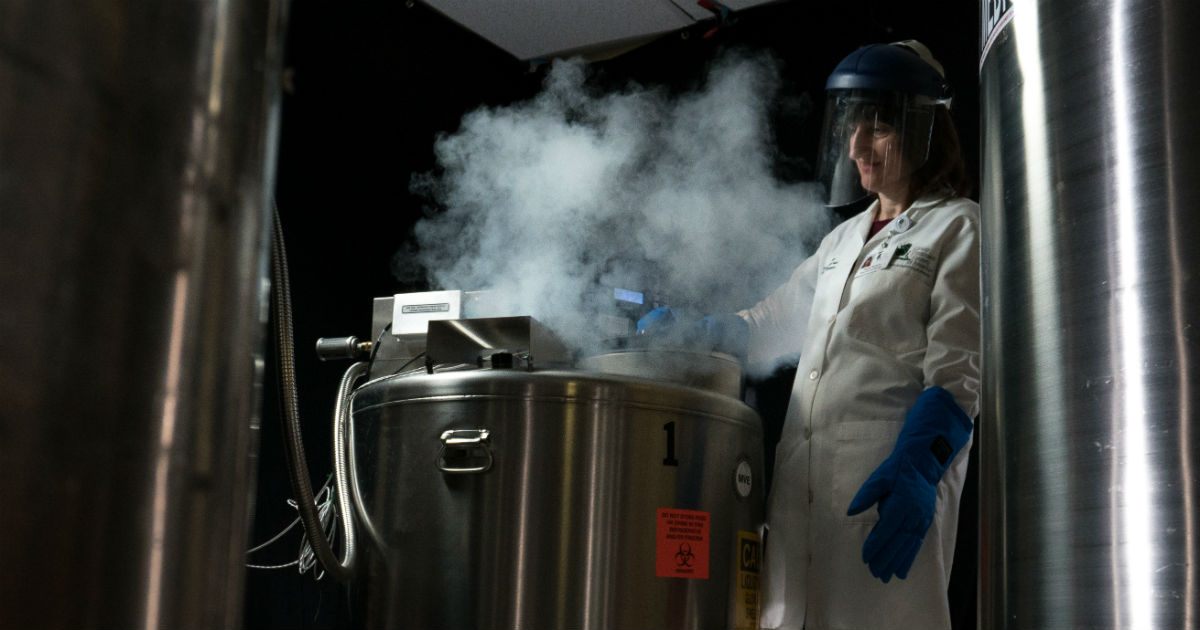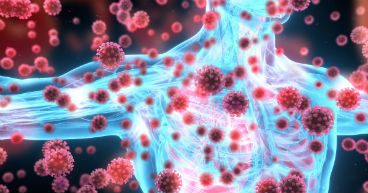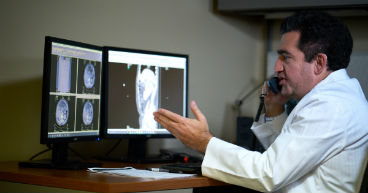
For many cancer patients, the treatment journey is filled with unexpected turns, successes, setbacks and challenges. For patients who have received a stem cell transplant, the gauntlet includes even more hurdles and considerations. While most cancer patients have compromised immunities, stem cell patients face additional challenges that may sap their immune system and make them highly vulnerable to infections, such as COVID-19.
For example:
- Cancers most often treated with stem cell transplants—blood cancers, such as lymphoma or leukemia—may already have damaged the patient’s immune cells.
- Some patients receive very high doses of radiation therapy and chemotherapy to kill cancer cells before their transplant, leaving them vulnerable to infection.
- Stem cell transplant patients may be given immunosuppressant drugs so they can better tolerate donated cells.
- Some stem cell patients are receiving a new, donated immune system, which may take weeks or months to adapt to its new host.
“Stem cell patients need to be extremely cautious and hypervigilant,” says Pamela Crilley, DO, Chair of the Department of Medical Oncology at Cancer Treatment Centers of America® (CTCA). “They may get different infections than other people and may get sicker faster. And it takes time for their new immune system to recover, so they may not be able to respond as well or as quickly as patients who have not had a transplant.”
It’s important for patients who recently received a transplant or are scheduled for one to be aware of the potential challenges and learn how to navigate the critical weeks before and after the transplant, when they are most vulnerable to infection. Below are the answers to six key questions.
What are stem cells?
Stem cells are immature cells that eventually grow into the many different kinds of cells found throughout the body. Blood cells, muscle cells and others were once uniform, undifferentiated stem cells. Stem cells have the ability to divide and replicate themselves for long periods of time.
Why would I need a stem cell transplant to treat my cancer?
A transplant is intended to replenish the body’s supply of hematopoietic stem cells and allow the body to start making new, healthy cells. Hematopoietic stem cells are immature blood cells in bone marrow that mature into the three types of blood cells:
- White blood cells that help fight off infections
- Red blood cells that carry oxygen in the blood
- Platelets that help blood to clot
What are the different types of stem cell transplants?
There are two main types of stem cell transplants:
An autologous stem cell transplant uses the patient’s own stem cells, harvested, frozen and then infused back into the body after chemotherapy or radiation therapy.
An allogeneic stem cell transplant uses stem cells collected from a donor, such as a relative or someone unrelated found through the National Marrow Donor Program.
Both transplants may make patients vulnerable to infection, but allogeneic transplant patients are at an even higher risk. “With an allogeneic transplant, you’re receiving someone else’s immune system,” Dr. Crilley says. “So, your own immune system is suppressed and has to accept the new system, and it has to grow and mature.”
What factors are considered when determining if a stem cell transplant should be delayed?
During the COVID-19 pandemic, many cancer patients may be faced with decisions on delaying treatment to avoid risk of infection. A decision to delay a stem cell transplant depends on many factors, including the type and stage of the cancer, the overall health of the patient and the type of transplant. “We have to prioritize a stem cell transplant based on the treatment’s intent and the risk and benefits of that particular treatment,” Dr. Crilley says. “If someone needs an allogeneic transplant and delaying the procedure might present a risk of progressive disease, that patient would be a strong candidate for going forward. Some transplants may be deferred until the risk of the pandemic has either passed or has been significantly reduced.”
When are stem cell transplant patients the most vulnerable?
Patients are most vulnerable in the first 30 days after their transplant, but they’re still vulnerable for six months to a year later. Patients who have received an allogeneic transplant may also be at risk from graft-versus-host (GVHD) disease, a serious condition that develops when the immune cells from the donor attack cells in the host. Severe cases of GVHD are potentially life-threatening and may occur days, weeks or, in some cases, years after the transplant. A mild case of GVHD, however, may be a promising sign that the new cells are attacking the underlying cancer.
Patients may also be at risk in the weeks leading up to the transplant, depending on their preparatory regimen. In some cases, patients can develop neutropenia, a decline in white blood cells. That may make them more susceptible to bacterial, viral and fungal infections.
What should stem cell patients do to reduce their risk of infection?
Dr. Crilley recommends stem cell patients stay at home whenever possible, and limit travel and exposure to other people. Patients should also follow all U.S. Centers for Disease Control and Prevention guidelines during the COVID-19 pandemic and take extra precautions to protect themselves, including:
- Washing hands frequently with warm water and soap
- Using hand sanitizers and disinfectants approved by the U.S. Environmental Protection Agency
- Avoiding touching their mouth, eyes and nose
- Avoiding people who are sick—and staying home if they’re sick
- If travel is necessary, going by car
- Disinfecting countertops, door handles, telephones and other frequently touched objects
“It’s important for patients to stay in touch with their transplant team and let them know of any symptoms they may be having,” Dr. Crilley says. “Some things that may not seem serious can become serious rather quickly. Fever is a good example.”
If you’re a cancer survivor or in active treatment and are concerned about how COVID-19 may impact you or your care, please contact your care team.
Learn about how other cancer treatments may damage the immune system.



